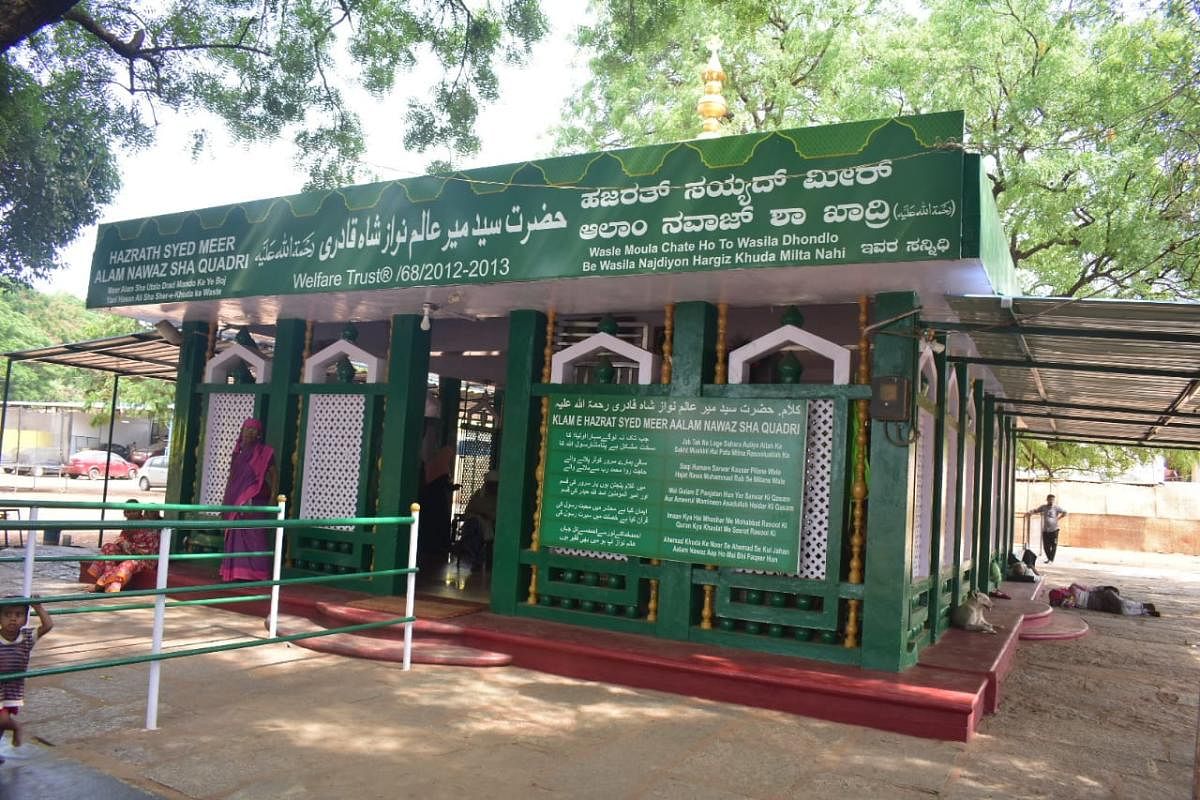

A cinema theatre, some buses and a few business establishments named 'Meer Alam' piqued my interest after I relocated to Hampi in 1992. As I delved into the details, I figured out that ‘Meer Alam’ was a Sufi saint revered by many in the region.
Scanty information on Meer Alam’s life prompted me to dig deep into the annals of history. Through my explorations, I came to know the historical significance of the saint-poet Meer Alam.
In my quest to quench curiosity, I participated in the Meer Alam’s Urus in Hosapete (his death anniversary held at the saint’s dargah) celebrated eight days after Ramzan.
The Urus saw the members of a choir that came from Akkalkot in the Solapur district of Maharashtra. Having gotten initiated into the Sufi order earlier, they rendered compositions of Meer Alam and called them Bhajans. They used dholaks and cymbals. They came from all professions — businessmen, watchmakers, farmers, teachers, tailors and shepherds. Most were clad in Gandhi caps and pyjamas.
They were not professional singers of Qawwali (a form of Sufi devotional singing popular in the Punjab and Sindh regions of Pakistan). Their performance lasted until the wee hours of the next day. They often quoted Meer Alam’s poetic lines while conversing.
They invited me to participate in the Urus of Meer Alam’s Khalifa (successor) Meer Mastur Ali Shah aka Daatapeer at Akkalkot. The conversations yielded so many stories I was hitherto unaware of.
Meer Alam's journey
Syed Meer Alam Nawaz Shah Qadri (1834-1932) hailed from Jamesabad in Sindh province in today’s Pakistan.
“Meer Alam participated in the 1857 freedom movement. He stayed with Urdu poets Amir Meenai (1829-1900), Daagh Dehlvi (1831-1905) and Ameer Hamza. It is possible that he left Sindh province due to torture by colonial rulers,” says Bashabhai Sherikar, an elderly person from Akkalkot.
Later he relocated from Akkalkot to Sandur. The two provinces shared a blood relationship that perhaps ensured that Meer Alam safely reached Sandur. Meer Alam’s differences with local rulers at Akkalkot and the need for a safe place to escape from the British could be two other possible factors that resulted in the departure.
Circumstances forced him to leave Sandur and settle in Hosapete, then a part of the Madras presidency.
Normally, saints don’t settle in one place. They don’t restrict themselves to a region as they are driven by the belief in constant movement. This also helps them find more disciples. These were possibly true in the case of Meer Alam too. He was 98-year-old when he died.
Secularism at the helm
Secularism marks the legacy of Meer Alam. His disciples ranged from the then treasury officer of the Sandur Palace Neelakanta Bhat Rajapurohit to many other locally famous people like Abdul Rahman, Allabhaksh Saheb, Somappa Dhobhi, Doddanagouda, Mahadev Bhat Joshi and Narasimha Bhat Joshi, who lived during the early 20th century.
Secular association between spiritual masters and their disciples involving the Sufi saints is not new to Karnataka. Aminuddin Chasti-Shirahatti Fakireshwar, Nangashah-Mahipatiraya, Kadakol Madivalappa-Motnalli Hasansab, Govind Bhat-Shishunal Sharif, Allipeera-Shilaveri Shivappa, Hubballi Siddharoodha-Syed Amir Hussain (Kabir Das) and Salagundi Guru Peera Qadri-Madireya Thimmappa were many such pairs.
The last four were Meer Alam’s contemporaries.
These saints believe that the divine energy, sought by seekers for self-realisation, actually resides in the human body. It transcends barriers of caste, religion and language and treats all creatures as divine reflections.
The Sufi philosophy of love and veneration of the master mark Meer Alam’s Bhajans. Most singers render his composition ‘Gurghar Ganga, Gurghar Kashi, Alamsha kabhi mandir jakar Hardware wahi tilak lagakar, Guru, hamara rang raseela, Us guruke ham daas huve’. A few Sanskrit words in these lines indicate possible influence by Kabir and Tulsidas.
His other popular compositions included ‘Jo peera, Shahjilani mashuq bi haqani’ and ‘Surat moorat jal thal pooja, Natak pooja ki nahi’. He is said to have composed ‘Ajab jamana kooda fasana, Deenat duniyadar huwe’ to target the British rule.
Meer Alam was also known as ‘Sheeghra (quick) Kavi’, ‘Pandit’, and 'Haqiqat (truth) Kavi’. His disciples would note the songs down based on his dictations. About 704 compositions written by him in Urdu and Devanagari scripts are available now.
Siddaramappa Kalaburagi, a landholder living in the area, had donated a piece of his land to Daatapeer Dargah. Even today, the tradition requires the Kalaburagi family to offer sandalwood paste during the Urus.
Composers like Meer Alam can be categorised as ‘Saint poets of Karnataka’ rather than ‘Saint poets of Kannada’ to include compositions of those who lived in Karnataka but wrote in Marathi, Telugu, Dakhani and Tamil languages.
Such innumerable anonymous local traditions remain unchronicled in the religious, political and literary history of Karnataka. These traditions continue to display the idea of diverse India in different forms such as poetry, music and practices.
(Translated from Kannada by Jagadish Angadi)